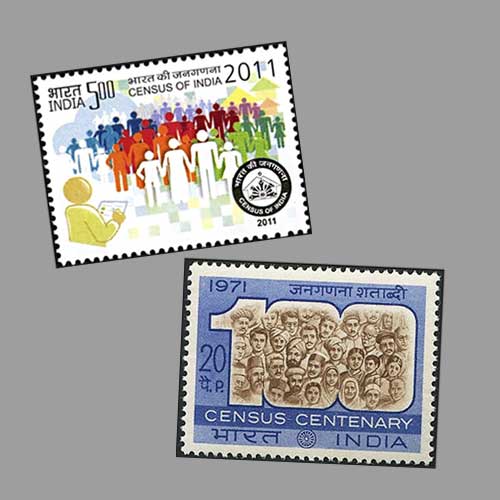Census of free India
2018-02-09 Fri
India attained independence on 15th August 1947. Following this event, a Bhore committee was established to constitute plans for the post-war development, welfare in various fields according to the comprehensive review of the nation’s population. This committee recommended that the statics of the population should be studied by the centre, due to it a Census Act came into force in 1948. The first post Independence era census was conducted in 1951 as per the provisions of this Act.The first Census of Independent India enumeration process started today on 9th February and ended on 28th February 1951. It was the seventh census conducted following continuous series of population counting from the pre Independence era. India is among the very few states in the world that has a proud history of holding a census after every ten years.
This practice of holding census has a long history, the earliest Indian literature ‘Rig Veda’ reveals the practice of population counting process around 800 to 600 BC. Arthasastra of Kautilya also mentions the process of population counting. During the reign of Mughal Emperor Akbar, comprehensive data pertaining to population was conducted and its account can be found in ‘Ain-e-Akbari’.
In 1881, the first census of pre-independence India was conducted and till liberation, the processed was followed. The process of a census is not mere counting of the heads it involves the collection of various demographic, social, cultural and economic characteristics of every individual in India. This new age has helped this process of data mining by introducing conventional machines to process data. Later in 1971, the census was recorded through computers.
India Post has issued a special postal stamp to commemorate the Census of 1971 on 10th March 1971. In 2011, India Post issued a commemorative stamp to mark the 15th Census of unbroken series from the year 1872. One can say India has successfully done the counting of its population for 15 times till now.
To know more about world census click here.
Latest News
-
Ghiyath Shah as Sultan
2025-10-17 FriAfter ascending the throne of the Malwa Sultanate, Ghiyath Shah issued circular coins early in his r...
-
Malwa Sultan Ghiyath Shah Square Gold Tanka
2025-10-16 ThuMalwa Sultan Ghiyath Shah issued square gold tankas in three weight standards: Double Tanka (21.9g),...
-
Malwa Sultan Ghiyath Shah's Billon Tanka as Heir Apparent
2025-10-14 TueIn Billon, Ghiyath Shah issued coins under two weight standards. Billon Tanka of 96 rati (10.7-11g),...
-
Antiochos I Soter Silver Tetradrachm, weighing 16.87 grams, sold for INR 22,000.
2025-10-07 TueAntiochos I, the Greek king of the Seleucid Empire, was of mixed heritage, being half-Iranian and ha...
-
Ghiyath Shah as Heir Apparent
2025-09-25 ThuGhiyath Shah was the ruler of the Malwa Sultanate, reigning from 1456 to 1500. From 1456 to 1469, he...

